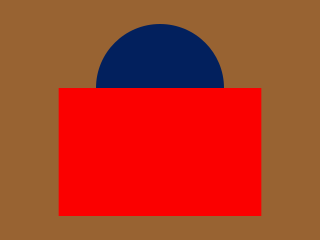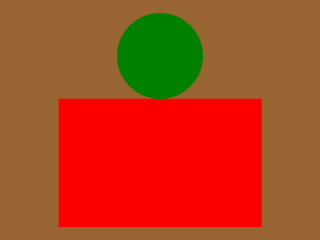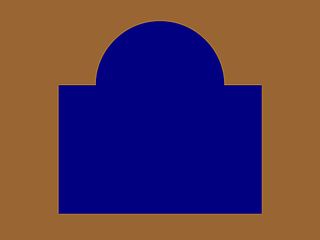
The 20th Battalion, CEF was a unit of the First World War Canadian Expeditionary Force.

The 31st Battalion (Alberta), CEF, was an infantry battalion of the Canadian Expeditionary Force during the Great War. The battalion recruited in Alberta and was mobilized at Calgary. The battalion was authorized in November 1914 and embarked for Britain on 17 May 1915. On 18 September 1915 it disembarked in France, where it fought with the 6th Infantry Brigade, 2nd Canadian Division in France and Flanders until the end of the war. The battalion was disbanded in August 1920.

The 2nd Battalion, Canadian Expeditionary Force was an infantry battalion of the Canadian Army created in response to outbreak of the First World War in August 1914. The battalion comprised local militia from many regions of Ontario. Men came from as far away as Sault Ste. Marie to join in Canada's military endeavour. Local militia gathered at Valcartier, in August 1914 and became part of the 2nd Battalion.

The 16th Battalion, CEF was a unit of the First World War Canadian Expeditionary Force. It was organized at Valcartier on 2 September 1914 in response to the Great War and was composed of recruits from the 91st Regiment Canadian Highlanders, the 79th Cameron Highlanders of Canada, the 72nd Regiment "Seaforth Highlanders of Canada", and the 50th Regiment "Highlanders".

The 14th Battalion, CEF was a battalion of the First World War Canadian Expeditionary Force.

The 7th Battalion, CEF was a battalion of the Canadian Expeditionary Force that saw service in the First World War.

The 3rd Canadian Infantry Brigade was a formation of the Canadian Army in both World War I and World War II. The brigade fought on the Western Front during the First World War, and in Sicily and Italy during the Second World War.

The 5th Battalion, CEF, known as "Tuxford's Dandys," was an infantry battalion of the Canadian Expeditionary Force during the Great War.

The 1st Canadian Infantry Battalion was a battalion of the Canadian Expeditionary Force that saw service in the First World War.

The 28th Battalion (Northwest), CEF was an infantry battalion of the Canadian Expeditionary Force during the Great War.

The 8th Battalion, CEF, also known by the nickname of The Little Black Devils of Canada, was an infantry battalion of the Canadian Expeditionary Force during the Great War. The battalion was authorized on 10 August 1914 and embarked for Great Britain on 1 October 1914. It disembarked in France on 13 February 1915, where it fought as part of the 2nd Canadian Brigade, 1st Canadian Division in France and Flanders until the end of the war. The battalion was disbanded on 15 September 1920.
The 15th Battalion, CEF was an infantry battalion of the Canadian Expeditionary Force during World War I. The 15th Battalion was authorized on 1 September 1914, embarked for Britain on 26 September 1914, and arrived in France on 15 February 1915. The battalion fought as part of the 3rd Canadian Brigade, 1st Canadian Division in France and Flanders throughout the war. The battalion was disbanded on 30 August 1920.
The Prince of Wales Rangers (Peterborough Regiment) was an infantry regiment of the Non-Permanent Active Militia of the Canadian Militia (now the Canadian Army). It was formed in 1936 by the amalgamation of The Peterborough Rangers and the 3rd Prince of Wales' Canadian Dragoons. In 1946, the regiment was converted from infantry to artillery and was later redesignated as the 50th Field Artillery Regiment (The Prince of Wales Rangers), RCA (transferred to the Supplementary Order of Battle in 1970).
The North Alberta Regiment was an infantry regiment of the Non-Permanent Active Militia of the Canadian Militia. In 1936, the regiment was disbanded as a result of a country-wide reorganization of the Canadian Militia.
The Peterborough Rangers was an infantry regiment of the Non-Permanent Active Militia of the Canadian Militia. In 1936, the regiment was amalgamated with the 3rd Prince of Wales' Canadian Dragoons to form The Prince of Wales Rangers.
The Dufferin and Haldimand Rifles of Canada was an infantry regiment of the Non-Permanent Active Militia of the Canadian Militia and later the Canadian Army. The regiment was formed in 1936, when The Haldimand Rifles was Amalgamated with The Dufferin Rifles of Canada. In 1946, the regiment was converted from Infantry to Artillery and now forms part of the 56th Field Artillery Regiment, RCA.
The Dufferin Rifles of Canada was an infantry regiment of the Canadian Non-Permanent Active Militia 1866-1936.
The Toronto Regiment was an infantry regiment of the Non-Permanent Active Militia of the Canadian Militia. The regiment was formed in 1920 when the war-raised 3rd Battalion of the Canadian Expeditionary Force was incorporated after the First World War into the post-war Canadian Militia. In 1936, the regiment was amalgamated with The Royal Grenadiers to form The Royal Regiment of Toronto Grenadiers.
The Manitoba Regiment was an infantry regiment of the Non-Permanent Active Militia of the Canadian Militia. In 1936, the regiment was disbanded as a result of a country wide reorganization of the Canadian Militia.
The Royal Grenadiers was an infantry regiment of the Non-Permanent Active Militia of the Canadian Militia. The regiment was unique in its history as it was only one of two regiments in the Canadian Army to be designated as a grenadier regiment. In 1936, the regiment was amalgamated with The Toronto Regiment to form The Royal Regiment of Toronto Grenadiers.











